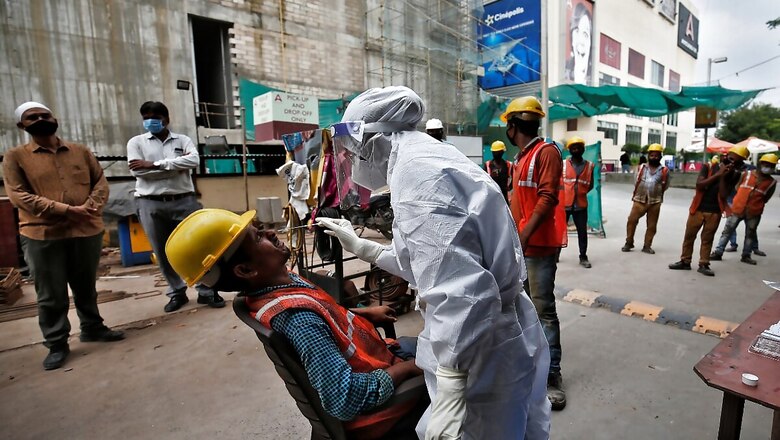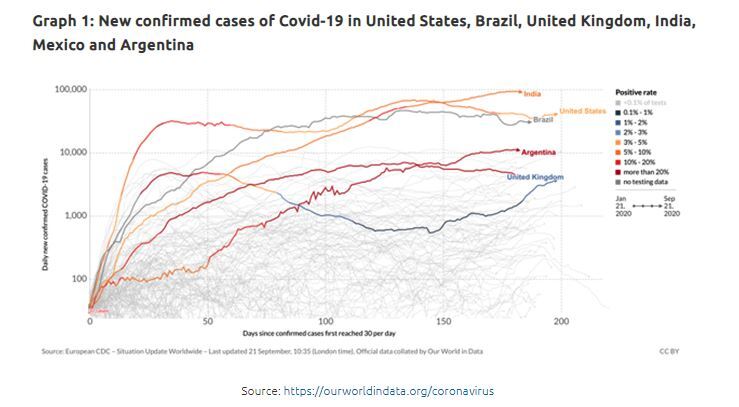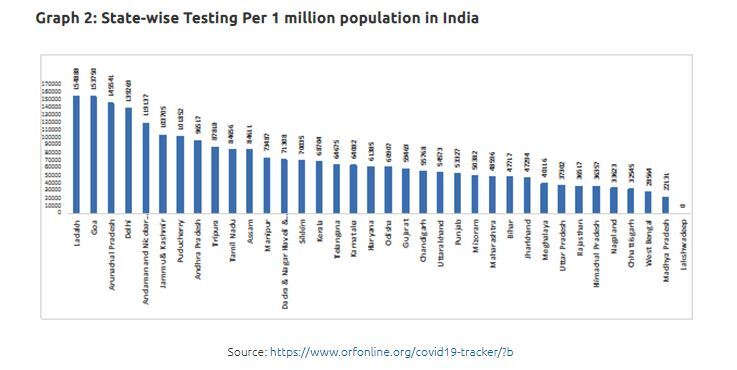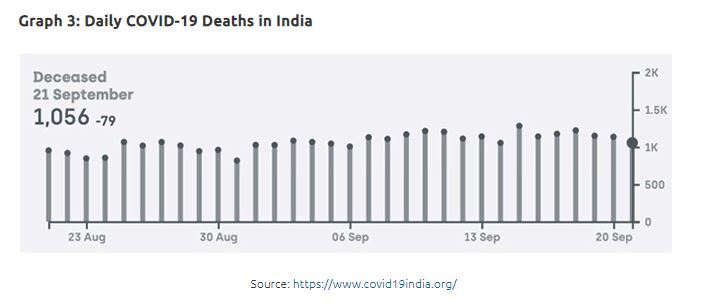
views
While looking at COVID-19 trackers that show a deceleration of the number of daily recorded cases in India (Graph 1) over the last few days, many wonder if the virus has peaked in India. Much of the decline is attributed to the dramatic fall of new cases in Maharashtra, from a high of 24886 on 11th September to 15738 on 21st September, but daily confirmed cases have also fallen in other high burden states like Andhra Pradesh, Karnataka and Uttar Pradesh. At the same time, at least some part of this decline in new cases is on account of a corresponding slowing down in testing.

Testing Less, Finding Less?
Although India crossed the significant milestone of one million tests per day as early as 21st August, further acceleration was not to be seen. In fact, the last month saw 13 days where daily testing numbers slipping under a million. Three out of the last four days saw tests under a million, falling as low as 7.31 lakhs on 20th September. At the same time, state level testing numbers show considerable variance with states like Goa and Arunachal Pradesh already testing around 1.5 lakh per million of their population, while Madhya Pradesh and West Bengal testing only under 30000 per million population (Graph 2).

Sources within ICMR indicate that of the 9.3 lakhs tests that were conducted on the 21st September, 2.59 lakhs were Rapid Antigen Tests (RATs). Unfortunately, disaggregated data on the type of tests conducted have not been made publicly available by the Government of India. A considerable number of total tests conducted being the less-accurate RATs may have contributed to a high number of cases not being detected as well.
Nevertheless, it has been clear for a while that most parts of India are under community transmission, and testing as a tool to contain the virus will only have a limited role in the weeks and months to come. A majority of Indian states have an overall test positivity ratio of more than 5% showing how the virus has taken root in the community. In addition, there are reported instances of malpractices from some states such as Uttar Pradesh, where a single doctor shared over 15 of his own samples to complete a COVID-19 testing target. This suggests that low positivity in some states may also be an unanticipated outcome of a target-based approach popular within the health system.
Low Death Rates as A Double-edged Sword.
It is also clearly emerging that a lower-than-expected death rate, that India witnessed over the last six months or so, is proving to be a double-edged sword. In many parts of the country, low overall death rates and the lockdown fatigue are resulting in people, including those of high-risk categories, letting their guard down after months of protecting themselves from the virus. The generally positive risk messaging of the government, which focuses on how well India is performing in comparison to the rest of the world, and on carefully chosen indicators like “recovery rate” also give a sense of complacency. Perhaps there is a need to shift from cases to deaths as the indicator to watch. States such as Odisha, Assam and Kerala have shown that even with a high case load, deaths can be kept at very low levels.
With new hotspots emerging in the smaller cities, towns and the rural areas, India is currently in the most dangerous phase of the pandemic yet, in terms of the human cost. It can still possibly worsen in the weeks to come—irrespective of whether we detect cases or not—if we aren’t able to prevent deaths. According to government sources, the Prime Minister will chair a high-level virtual meeting with the Chief Ministers and Health Ministers of seven COVID-19 high burden States/territories—namely Maharashtra, Andhra Pradesh, Karnataka, Uttar Pradesh, Tamil Nadu, Delhi and Punjab—to review the status and preparedness of COVID response and management, on 23rd September 2020.
Multiple Trajectories, Multiple Peaks
More than 63% of the Active Cases of the country are concentrated in these seven hotspots. According to official numbers, they also account for 65.5% of the total confirmed cases and 77% of the total deaths. Of these, Maharashtra, Punjab and Delhi are reporting higher mortality rates. Most of these states also have test positivity rates above the national average of 8.52%. But if this pandemic has taught us anything, it is that the next month’s hotspots need not be the same as last month’s. In other words, a diverse country like India’s national average and trends will hide more than they reveal.
As we look at the current daily case numbers at the national level driven by the seven high burden states and feel relieved and hopeful, there are worrying increases of case numbers in other states like Kerala, Gujarat, Rajasthan, Madhya Pradesh, Haryana, Chhattisgarh, West Bengal, and many more. While Covid-19 daily deaths haven’t increased considerably over the last month, they still haven’t shown any signs of relenting (Graph 3). As the pandemic has spread to more rural areas, this plateau may also be partly explained by uncounted deaths, rather than lower number of deaths per se.
Graph 3: Daily COVID-19 Deaths in India

Given this situation, it will be important for the country to be alert and cautious as we enter Unlock 4. The perceived fall in the number of daily cases—if it doesn’t get reflected in a corresponding fall in the number of deaths a couple of weeks down the line—will prove to be suspicious. As we re-open the economy, government communication should not fall into the trap of playing down the risk of this dangerous virus, particularly for the elderly and the immuno-compromised. Mask wearing, physical distancing and hand hygiene remain the best weapons available with the public, as India awaits a safe and effective vaccine.
It is important to remind the public that more than a thousand people die every day of COVID-19 according to official numbers alone. Bringing that number as close to zero as possible is the primary policy objective for the government and the citizens for the months to come. Instead of tracking COVID-19 cases, it is the COVID-19 deaths that we need to focus on. Delhi’s experience has taught us that while the risk of a second peak higher than the first one is clearly present even in a state reporting high seroprevalence, it is still possible to keep deaths at relatively lower levels.




















Comments
0 comment